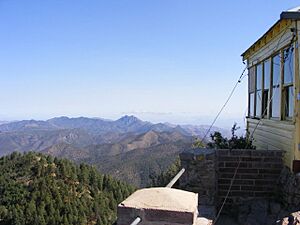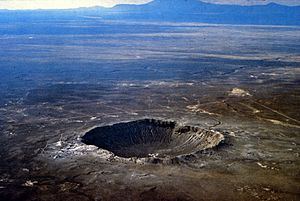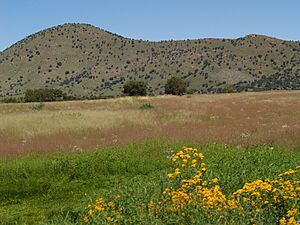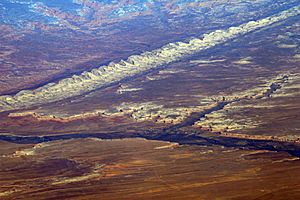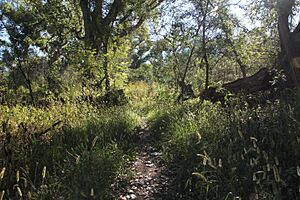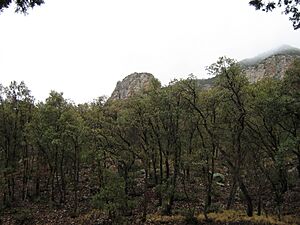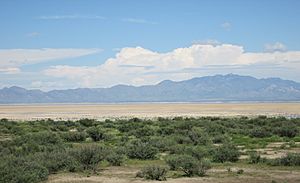List of National Natural Landmarks in Arizona facts for kids
Arizona is home to some truly amazing natural places! These special spots are called National Natural Landmarks. They are chosen because they have unique geology, plants, animals, or other natural features that are important to protect and learn about. Think of them as natural treasures! There are 10 of these incredible landmarks in Arizona, each with its own cool story.
Contents
Discovering Arizona's Natural Wonders
Barfoot Park
Barfoot Park became a National Natural Landmark in 2011. It's located in Cochise County within the Coronado National Forest. This park is famous for having one of the best examples in the United States of a special type of ponderosa pine forest. These forests are influenced by the "Madrean" region, which means they have plants and animals usually found in mountains that stretch from Arizona down into Mexico.
Barringer Meteor Crater
Designated in 1967, the Barringer Meteor Crater is in Coconino County. This giant hole in the ground is privately owned and is super important because it was the very first place on Earth officially identified as a meteor crater. It's a huge bowl-shaped dent made when a meteorite crashed into our planet a long, long time ago!
Canelo Hills Cienega Reserve
This reserve, named a landmark in 1974, is found in Santa Cruz County. It's owned by The Nature Conservancy, a group that helps protect nature. The Canelo Hills Cienega Reserve is special because it's home to some very rare species. You can find the extremely uncommon Canelo Ladies Tresses Orchid here, along with a unique fish called the Gila chub.
Comb Ridge
Comb Ridge became a landmark in 1976. It's located in Navajo County on lands belonging to the Navajo Nation. This amazing rock formation is the only place in North America where scientists have found fossils of creatures called tritylodonts. These ancient animals lived a very long time ago, and finding their fossils here helps us learn about Earth's past.
Grapevine Mesa
Grapevine Mesa was recognized as a landmark in 1967. This area is in Mohave County and is managed by the federal Bureau of Land Management. What makes Grapevine Mesa stand out is that it has the most impressive collection of Joshua trees in the entire United States. These unique, spiky trees are a symbol of the American Southwest.
Kaibab Squirrel Area
The Kaibab Squirrel Area became a landmark in 1965. It's located in Coconino County within the Kaibab National Forest. This area is important because it shows the perfect home for the Kaibab squirrel. This special squirrel is found only on the Kaibab Plateau on the North Rim of the Grand Canyon, and it has a unique white tail and dark body.
Onyx Cave
Onyx Cave was designated a landmark in 1974. You can find it in Santa Cruz County, inside the Coronado National Forest. This cave is considered to be the most beautiful and impressive cave in all of Arizona, known for its stunning rock formations.
Patagonia-Sonoita Creek
This landmark was established in 1970 and is located in Santa Cruz County. It's owned by The Nature Conservancy. Patagonia-Sonoita Creek is a fantastic example of a "riparian forest," which means a forest that grows along a river or stream. It's one of the last places in southern Arizona with a permanent stream and the special plants and animals that depend on it, like cottonwood and willow trees.
Ramsey Canyon
Ramsey Canyon became a landmark in 1965. It's in Cochise County and is also owned by The Nature Conservancy. This canyon is a deep, narrow gorge with steep sides, carved out by a stream over many years. It's a beautiful and important natural area.
Willcox Playa
Willcox Playa was named a landmark in 1966. Located in Cochise County, it's managed by the federal Bureau of Land Management. A "playa" is a dry lakebed, and Willcox Playa is the biggest one in Arizona. It's a huge, flat area that sometimes fills with water after rain, creating a temporary lake.


